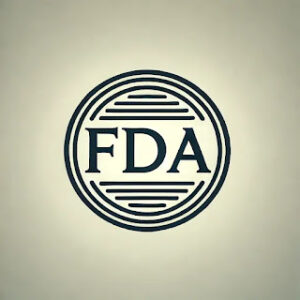Understanding FDA’s Guidance on Sterility Information in 510(k) Submissions

In January 2024, the FDA released an updated guidance document titled “Submission and Review of Sterility Information in Premarket Notification (510(k)) Submissions for Devices Labeled as Sterile.” This final guidance supersedes previous versions from 2016 and provides the latest recommendations for sterilization processes in medical devices.
Key Points of the Document:
Document Type and Guidance Nature:
The document is a final guidance, which means it represents the current thinking of the FDA but is not legally binding. It suggests best practices unless specific regulatory requirements are cited.
Publication Date:
The guidance was published on January 8, 2024.
Scope:
This guidance applies to 510(k) submissions for devices labeled as sterile, specifically focusing on industrial terminal sterilization processes based on microbial inactivation. It excludes processes relying on microbial exclusion, devices incorporating materials of animal origin, and liquid chemical sterilants.
Major Sections Breakdown:
Introduction:
The document updates and clarifies information regarding sterilization processes recommended in 510(k) submissions. It includes details about pyrogenicity information and references to FDA-recognized consensus standards.
Background:
The FDA has observed an increase in 510(k) submissions using non-traditional sterilization methods. It categorizes sterilization methods into “established” and “novel,” with specific recommendations for each.
Methods of Sterilization:
- Established Methods: These include dry heat, EO, steam, radiation, and vaporized hydrogen peroxide, recognized for their long history of safe use.
- Novel Methods: These are newly developed or less commonly used methods like vaporized peracetic acid, high intensity light, and microwave radiation. The FDA requires more detailed information and validation data for these methods.
Sterilization Information for Devices Labeled as Sterile:
- For Established Methods: Sponsors must provide a description of the sterilization method, chamber, validation method, sterility assurance level (SAL), and pyrogenicity testing.
- For Novel Methods: In addition to the established methods’ requirements, detailed descriptions of the sterilization process, validation protocol, and data are necessary.
Key Actions for Manufacturers:
Validation and Documentation:
Ensure all required information is included in the 510(k) submission, particularly for novel methods, where comprehensive data is crucial.
Sterility Assurance Level (SAL):
Devices must meet an SAL of 10-6 unless intended only for contact with intact skin, which should meet an SAL of 10-3.
Pyrogenicity Testing:
Devices contacting the cardiovascular system, cerebrospinal fluid, or labeled non-pyrogenic must meet specific pyrogen limit specifications.
Packaging Information:
A description of the sterile barrier system and package test methods must be provided, though not the data itself.
Conclusion
This guidance document is essential for medical device manufacturers preparing 510(k) submissions for devices labeled as sterile. It outlines the FDA’s expectations for sterilization methods and validation, ensuring the safety and effectiveness of medical devices. Manufacturers should carefully review this guidance to ensure compliance and successful 510(k) submissions. For more detailed information and to view the full guidance document, you can visit the FDA’s official website.
For any further questions or personalized consulting services, feel free to contact us at Medestan Consulting. We specialize in helping manufacturers navigate FDA regulations and ensure successful submissions.


